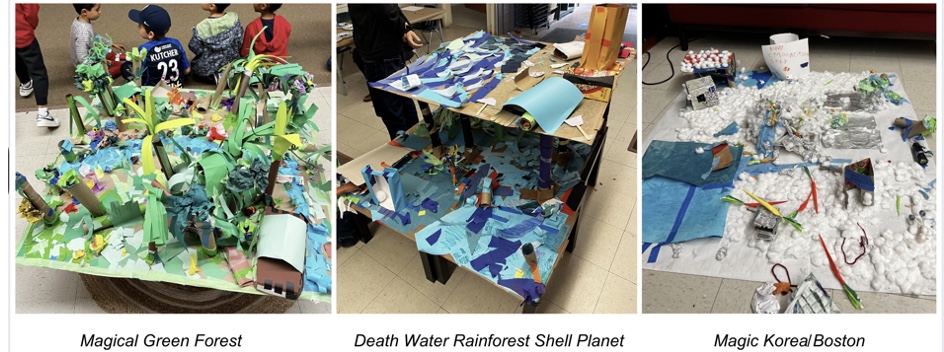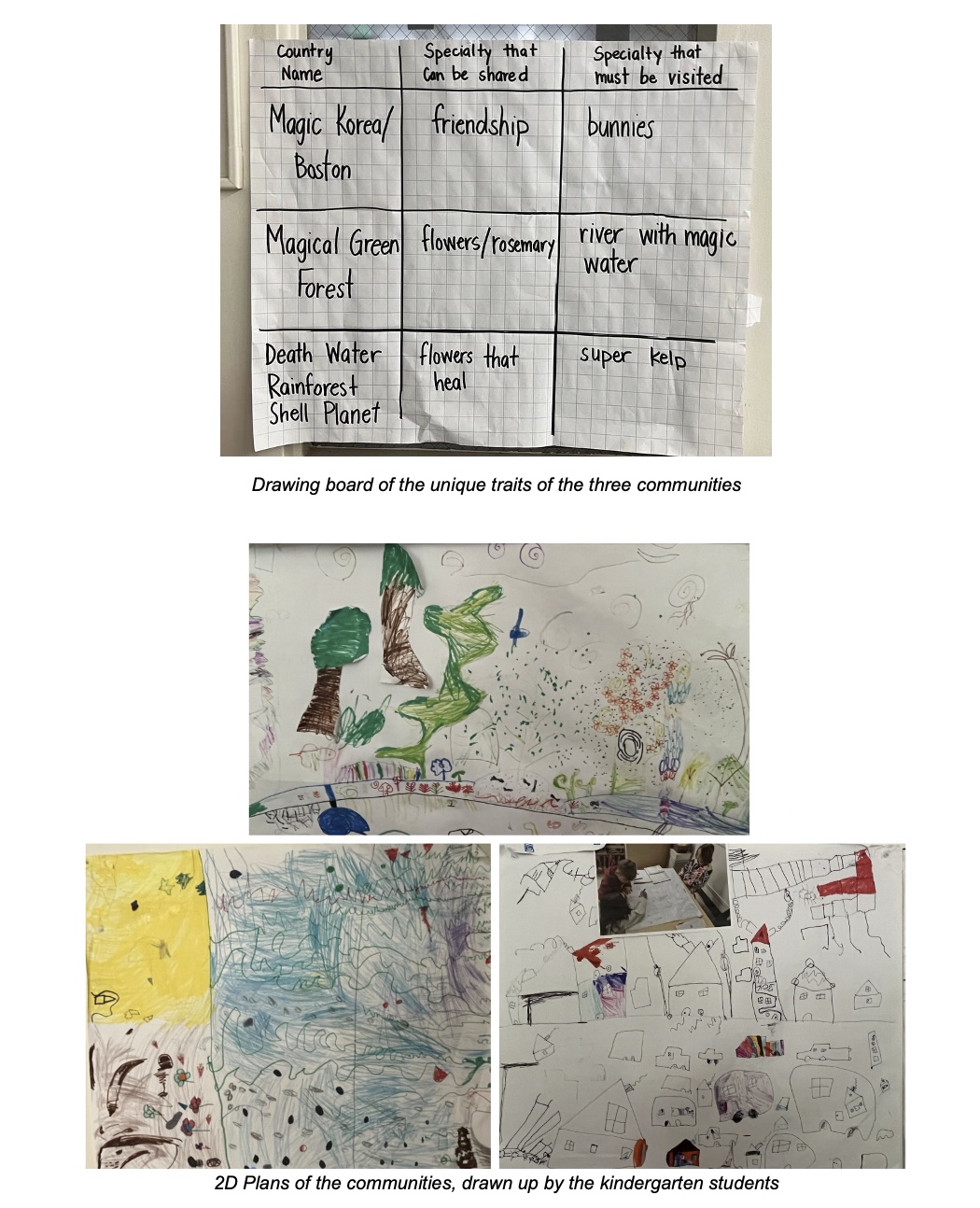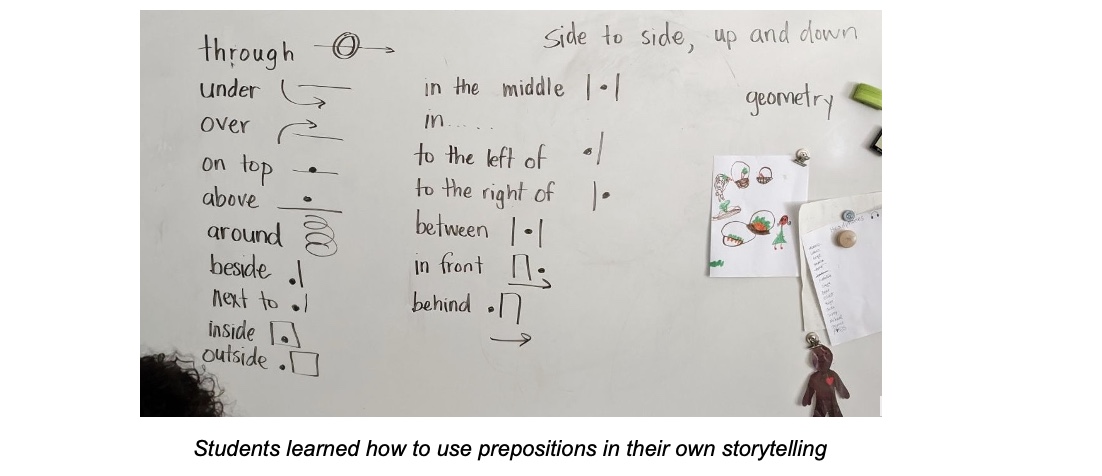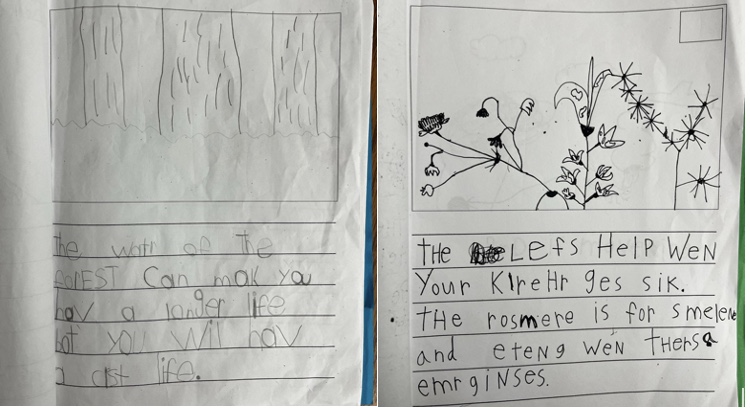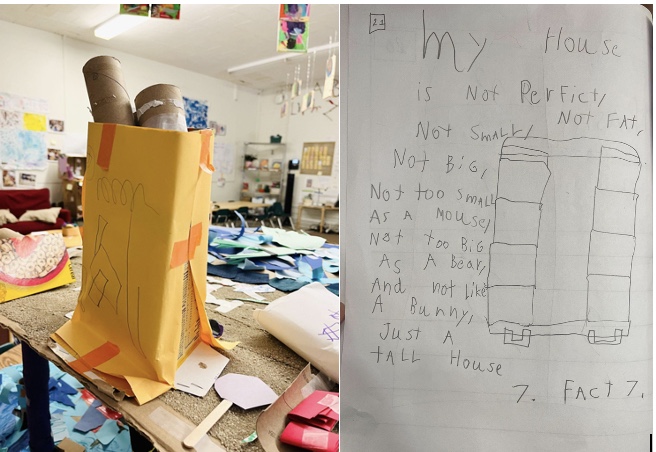Magical Green Forest–a world where rivers and flowers have magical healing properties; Death Water Rainforest Shell Planet — a magnificent two-story territory where “super kelp” grow indefinitely; Magic Korea/Boston — a snow filled landscape where friendship, bunnies and carrots abound. These are the enchanting worlds imagined and created by an ECII classroom.
It is no dispute that creativity plays an instrumental role in children’s intellectual and socio-emotional development, especially in their early childhood years. It often takes place throughout everyday moments of play, when children can personally explore their own curiosities to make sense of the world around them. In line with the school’s commitment to keeping education dynamic and student centered, the teachers and researchers at the UCLA Lab School – Demonstration Teacher Kelly Peters and CONNECT Research Associate Dr. Christine Lee – have designed an innovative play-based learning unit to celebrate students’ inventiveness, encourage collaboration, and support literacy development.
After the class split into three groups, each group brainstormed an entirely novel community of their own by defining their community’s unique qualities and drafting 2-D conceptualizations of what they envisioned their community to look like.
Students afterwards had the opportunity to bring their enterprising visions on the paper to life. Apart from building the physical landscape of the communities, students made their own personalized ‘‘creature’’ and a ‘‘shelter’’ to serve as their native creature’s place of residence within their formulated realm.
With free rein over an abundance of materials – including colored paper, aluminum foil, toilet rolls, cotton balls, colored tape, popsicle sticks, newspaper, pipe cleaners and more, students worked collaboratively to assemble 3-D iterations of their planned communities. The rich materials provided endless possibilities for stimulating children’s creativity: for instance, a pipe cleaner was used by one child to represent the eggs laid by their creature, and used by another to symbolize the creature’s wings.
I have a core memory from the first time I stepped into the classroom: as soon as Ms. Peters announced the start of the construction time, all of the children excitedly ran to their respective stations to get to work – grabbing materials, pasting items, wrapping tape, drawing diagrams and folding paper all on their own accord, without any didactic direction. As facilitators, we were not there to tell the children exactly what to do. Instead, we were there to observe and probe their thinking through open-ended questions like ‘What are you making?’, ‘What is the purpose of this?’ or ‘Where should this go?’ Keeping this a child-led activity allowed students to spontaneously explore, experiment, problem-solve, and glean new takeaways like how different shapes best fit together, or the best method for stabilizing a tall structure. This idea of guided play – a combination of child autonomy and adult guidance – helped us to support children’s learning while ensuring they were still actively engaged
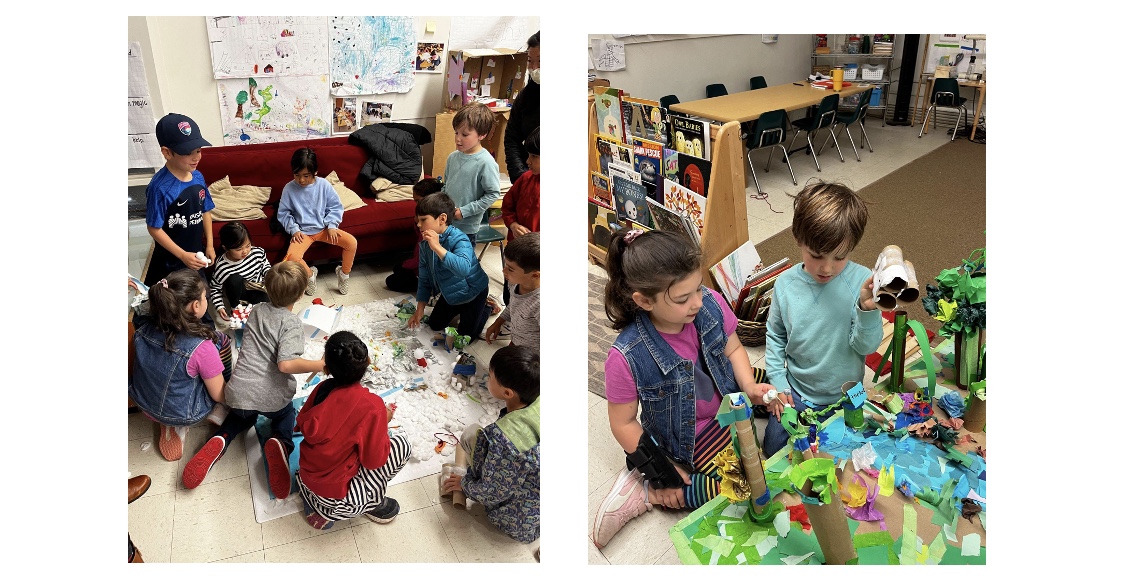 Students engaging in free play and bringing their creatures to visit other communities
Students engaging in free play and bringing their creatures to visit other communities
The children’s artistic production furthermore provided an excellent opportunity for students to hone their writing skills. Full of inspiration and ideas from their playful construction process and play, students were given the opportunity to express their creativity through both expository narratives and adventure tales about their invented communities.
To support students in their creative writing, Ms. Peters and Dr. Lee cultivated students’ spatial awareness like perspective-taking. They taught lessons by using media to showcase scenes from various points of view to encourage students to step into the shoes of their own creature when authoring their stories. Additionally, adventure stories and wordless books were closely read and examined with the class to build students’ vocabulary and to encourage the use of prepositions for describing how their creature moved within the story
In the end, some of the children’s stories highlighted distinctive elements of their communities, like the fast-growing kelp or the mysterious heart of the magical forest, which arose from children’s initial worldbuilding discussions. Other writings detail children’s fictional accounts about the brave escapades their creatures experienced in their world, which could have emerged from the times children spent playing with their ‘‘creatures’’ and interacting with one another in the different communities.
Left: ‘’The water of the forest can make you have a longer life but you will have a cursed life.’’
Right: ‘’The leaves help when your creature gets sick. The rose is for smelling and eating when there’s an emergency.’’
A poem a student wrote about their house they built (pictured left) in their community. Right: ‘’My house is not perfect, not small, not fat, not big, not too small as a mouse, not too big as a bear, and not like a bunny, just a tall house.
In the class’s final debrief, a quote by one child really stood out to me: ‘‘I like that you don’t have to always make something real; you can make something that is not real that could become real.’’ Indeed, this play-based project empowered our young kindergarteners with the agency to embrace teamwork, express themselves artistically and linguistically, and most importantly, generate their own learning opportunities in fun, meaningful and otherworldly ways.
